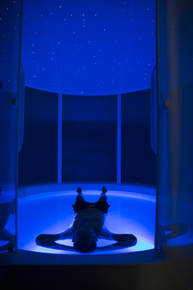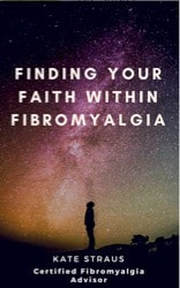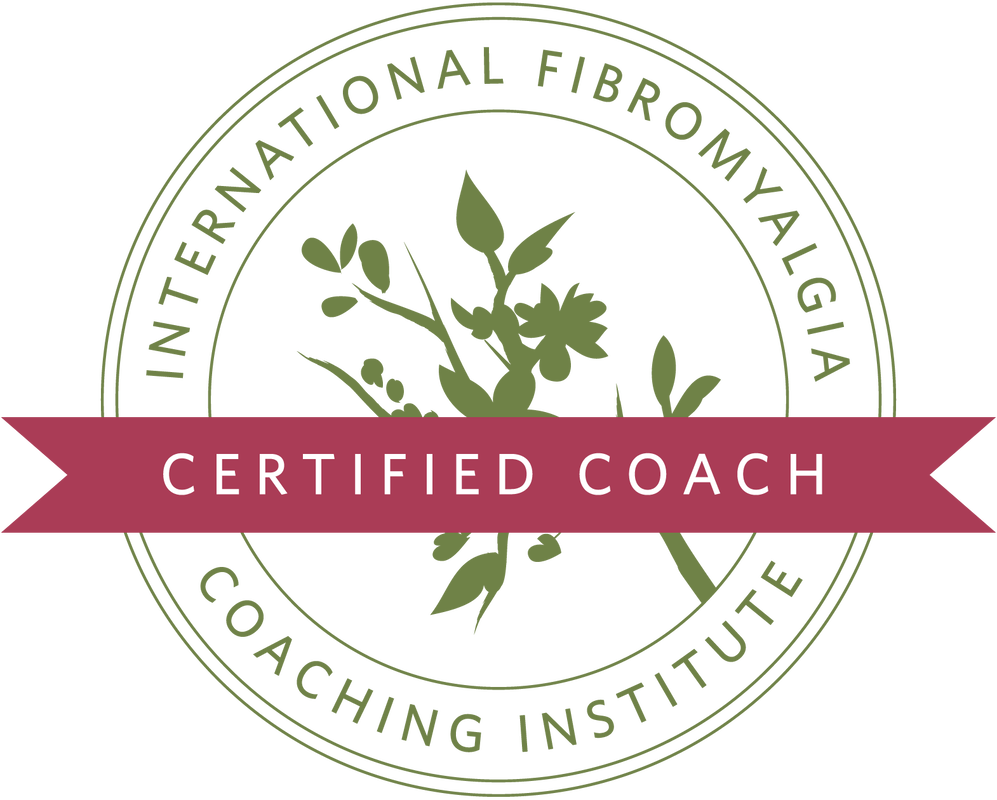 ***Reprinted from my article on ProHealth.com published July 30, 2018.*** A couple of weeks ago, I attended a fibromyalgia coaching retreat with the International Fibromyalgia Coaching Institute. The leader of the retreat, Tami Stackelhouse, surprised us with a visit to Enso Floats in Portland, Oregon, where we could experience what it was like to receive flotation therapy. Ongoing studies of floating report physical and psychological benefits including: pain management, mindfulness, stress relief, anti-gravity effect, magnesium absorption, decreased issues with insomnia/sleeplessness, heightened senses, increased immune functions, and help with mental health disorders. According to the Fibromyalgia Flotation Project, data was collected to determine how beneficial the effects of flotation are on fibromyalgia symptoms. Below are the symptoms listed with the average amount of relief that the participants of the study reported: 66% reduction in pain level 72% reduction in being bothered by pain 66% reduction in muscle tension 66% reduction in stress levels and 66% reduction in anxiety levels. The project then reported on certain symptoms that were improved by floating including: 42% increase in freedom of movement 58% increase in energy level 64% increase in feeling of well being 163% increase in relaxation level 19% increase in amount of sleep and 83% increase in sleep quality. As someone who has heard of these benefits, I was super excited to try this potential alternative treatment to help address some of the symptoms. However, I wasn’t sure whether I would be willing to spend the money on it. Although I’m not one who likes surprises, I was thrilled with this surprise. Being given the opportunity to do this was a gift. It’s important to note though that cost is relative. According to one of my fellow coaches, though, floating would save her money, as a 90 minute float session is less than a 90 minute massage. When you walk into Enso Floats, you enter into an open room with minimalist decorations and the smell of patchouli. Also, a sweet dog greets you warmly along with the employees. Calming teas and water are available to drink before or after your floating session. (Note: Please be aware that the description of this floating center is most likely different from others around the country or the world.) Before starting my session, my fellow coaches and I were given a tour of the facility, which includes five large rooms with two circular eight foot tanks and three six by eight cabins. One of the latter cabins was an open tank helpful to those that might deal with claustrophobia. Each room had a shower with shampoo, conditioner, and soap available for use. Prior to entering the tank, we were required to shower with soap and wet our hair to wash out any products we might have and encouraged to shower after our floating session to clean our bodies of residual salt. We were given the option to leave the lights on, have complete darkness (sensory deprivation), or set lights that looked like the constellations. I chose the latter and loved it. Below is a picture of one of the circular tanks. After showering, I was eager to enter my tank. The room smelled slightly of sulfur due to the amount of Epsom salts in each tank (1,000 pounds in each tank!), but it wasn’t overwhelming or unpleasant. Having been to Israel before, I asked the employee whether the amount of salt in this water was similar to that of the Dead Sea. His response was that it was five times as buoyant. Whoa! I remember going into the Dead Sea and having trouble keeping my feet on the bottom, so I was super curious as to how this would work, especially since the tank was only filled with 18 inches of water. I placed the provided ear plugs in my ears (to keep the water from getting into my ears), stepped into the tank, picked up the head “pillow” (a foam contraption used to support your head and neck), and sat down in the water. It felt slightly slimy, but not uncomfortable, so I laid back, put my head on the pillow, let go of my inhibitions and began to float. One might think it difficult to float in only 18 inches of water but that was not the case. As you can see from the picture above, the water supports you and the only thing you need to do is find the position that’s most comfortable for you. I felt most comfortable with my legs separated a bit and out straight as well as my arms out, turning my body into a “T.” Any movement you make causes you to move, so there were several instances where I would gently bump the edge of the tank but it was not bothersome at all. Once I was comfortable in my position, I would alternate between closing my eyes and opening them to enjoy the “stars” above. For 20 minutes, I was in pure heaven. But then I began to itch. I would move a leg to “scratch” the other or use my hand to gently scratch my face or arms. It took me only a couple of minutes to understand why I was itching. It was not an issue of cleanliness. I had forgotten that I do not do well with topical magnesium treatments. I had tried magnesium in lotion and oil form previously, and it caused my legs to turn red and itch tremendously. This is what was happening here. But, I refused to let it get to me and I turned to focusing on my breath and silently reciting some meditations and mantras to get the focus off the itching. It didn’t quite work, but I did stay in the tank the entire time. Thankfully, my legs did not turn red and not long after I showered the itching did go away. Our warning signal that our session was over was a couple of minutes of quiet music and then the lights came on in the room. I got out of the tank, showered, dressed, and met my fellow coaches in the waiting room. I was one of the last to come out. Most of us expressed that we were glad to have the opportunity to try this out. Here are some anonymous quotes of how my fellow coaches felt during/after the float: “I have claustrophobia so I was concerned, but I left the doors open in the tank and I was fine. I found it to be a relaxing area. I can’t normally lie on my back but thought I’d try it with the neck/head support they provided. It felt very uncomfortable so I sat up and continued the rest of the session sitting in the tank. It did help with my lower back/leg/knee pain. However, it did result in a mini flare in my shoulder and neck area.” “I found it way more helpful than massage. The 90 minute float session was like getting the most amazing night’s sleep. I walked out of there feeling like I got a ‘regular’ person’s night’s sleep.” “It reduced my body pain significantly. I had terrible pain the day going into it and was pain free for the next two days and drastic reduction after. My mind was chattery so would not do it again for relaxation purpose but would try it again for pain reduction.” I’m not sharing these to discourage anyone from trying out the floating tanks; in fact, just the opposite. I highly recommend that anyone with fibromyalgia or other chronic illnesses try it out as there is strong research stating that the use of flotation tanks provides significant benefits (ones listed in the first paragraph), including the results of this article. Everyone with fibromyalgia (and other chronic [pain] disorders) requires a combination of different medications, supplements, and treatments. Flotation is one that has strong research to prove that it helps many. If you have any more questions about my experience, flotation therapy in general, or anything that you might need support with regarding your fibromyalgia, you can contact me here. I look forward to hearing from you soon!
1 Comment
|
AuthorI’m Kate Straus and I’m a Certified Fibromyalgia Advisor. I help Jewish women feel confident in their ability to practice their faith while navigating the ups and downs of fibromyalgia. I’m using the disease that at one time knocked me down, to help support others live life to their fullest. Archives
January 2021
Categories |

 RSS Feed
RSS Feed


